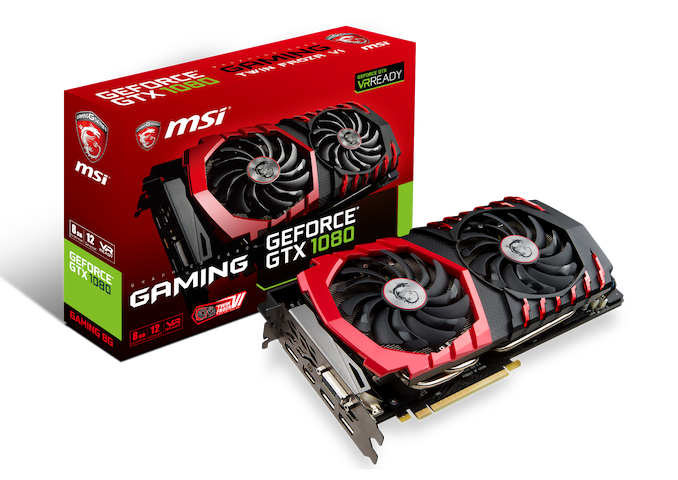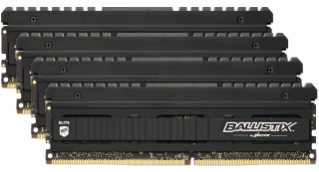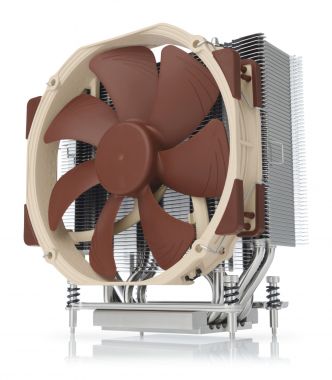GIGABYTE Z590 Aorus Tachyon Review: Built for SPEED
by Gavin Bonshor on May 10, 2021 9:30 AM ESTBoard Features
The GIGABYTE Z590 Aorus Tachyon is an E-ATX motherboard designed primarily for enthusiasts and extreme overclockers, with plenty of functionality for regular users such as gamers and content creators. Included in the feature set are four full-length PCIe slots, with two operating at PCIe 4.0 x16 and x8x/8, and two at PCIe 3.0 x4 and x1 respectively (top to bottom). For storage, the Tachyon has three M.2 slots, one PCIe 4.0 x4, and two PCIe 3.0 x4/SATA, with eight SATA ports in total. Six of the SATA ports are controlled by the chipset with support for RAID 0, 1, 5, and 10, while the other two are driven by an ASMedia ASM1061 SATA controller. The Z590 Aorus Tachyon has two memory slots, despite being a larger E-ATX board, which is purposely designed to enhance the overall memory performance, including latency and frequency overclocking. Both slots officially support up to DDR4-5333, with capacities up to 64 GB in total. Users looking to use extensive cooling options can do so through eight 4-pin headers. These headers are split into one for a CPU fan, one for a water cooling CPU fan/pump, four for chassis fans, and two that can either be used for water pumps or chassis fans.
| GIGABYTE Z590 Aorus Tachyon E-ATX Motherboard | |||
| Warranty Period | 3 Years | ||
| Product Page | Link | ||
| Price | $530 | ||
| Size | E-ATX | ||
| CPU Interface | LGA1200 | ||
| Chipset | Intel Z590 | ||
| Memory Slots (DDR4) | Two DDR4 Supporting 64 GB Dual-Channel Up to DDR4-5333 |
||
| Video Outputs | 1 x HDMI 2.0 | ||
| Network Connectivity | Intel I225-V 2.5 GbE Intel AX210 Wi-Fi 6E |
||
| Onboard Audio | Realtek ALC1220-VB | ||
| PCIe Slots for Graphics (from CPU) | 2 x PCIe 4.0 (x16, x8/x8) | ||
| PCIe Slots for Other (from PCH) | 1 x PCIe 3.0 x4 1 x PCIe 3.0 x1 |
||
| Onboard SATA | Six, RAID 0/1/5/10 (Z590) Two (ASMedia) |
||
| Onboard M.2 | 1 x PCIe 4.0 x4 2 x PCIe 3.0 x4/SATA |
||
| Thunderbolt 4 (40 Gbps) | N/A | ||
| USB 3.2 (20 Gbps) | 1 x USB Type-C (Rear panel) | ||
| USB 3.2 (10 Gbps) | 4 x USB Type-A (Rear panel) 1 x USB Type-C (One header) |
||
| USB 3.1 (5 Gbps) | 4 x USB Type-A (Rear panel) 2 x USB Type-A (One header) |
||
| USB 2.0 | 4 x USB Type-A (Two headers) | ||
| Power Connectors | 1 x 24-pin Motherboard 2 x 8-pin CPU |
||
| Fan Headers | 1 x 4-pin CPU 1 x 4-pin Water Pump/chassis 4 x 4-pin Chassis 2 x 4-pin Chassis/Water pump |
||
| IO Panel | 2 x Antenna Ports (Intel AX210) 1 x HDMI 2.0 output 1 x USB 3.2 G2x2 Type-C 3 x USB 3.2 G2 Type-A 4 x USB 3.2 G1 Type-A 1 x RJ45 (Intel) 1 x Q-Flash BIOS Flashback button 1 x OC Ignition button 1 x PS/2 Keyboard port 1 x PS/2 Mouse port 5 x 3.5 mm audio jacks (Realtek) 1 x S/PDIF Optical output (Realtek) |
||
Despite the Tachyon being focused on performance for extreme overclockers, it does include a varied selection of connections on the rear panel. Using features new to Z590, the Tachyon includes one USB 3.2 G2x2 Type-C port, which is useful for content creators. Other connections include three USB 3.2 G2 Type-A, four USB 3.2 G1 Type-A, one HDMI 2.0 video output, one PS/2 keyboard, and one PS/2 mouse port. Onboard audio is handled by a Realtek ALC1220-VB HD audio codec which includes five 3.5 mm audio jacks, a S/PDIF optical output, and a front panel header. Focusing on networking, GIGABYTE includes an Intel I225-V 2.5 GbE controller, as well as an Intel AX210 Wi-Fi 6E CNVi which also allows for the connectivity of BT 5.2 devices.
Test Bed
With some of the nuances with Intel's Rocket Lake processors, our policy is to see if the system gives an automatic option to increase the power limits of the processor. If it does, we select the liquid cooling option. If it does not, we do not change the defaults. Adaptive Boost Technology is disabled by default.
| Test Setup | |||
| Processor | Intel Core i9-11900K, 125 W, $374 8 Cores, 16 Threads 3.5 GHz (5.3 GHz Turbo) |
||
| Motherboard | GIGABYTE Z590 Aorus Tachyon (BIOS F5d) | ||
| Cooling | Corsair iCue H150i Elite Capellix 360 mm AIO | ||
| Power Supply | Corsair HX850 80Plus Platinum 850 W | ||
| Memory | G.Skill TridentZ DDR4-3200 CL 14-14-14-34 2T (2 x 8 GB) | ||
| Video Card | MSI GTX 1080 (1178/1279 Boost) | ||
| Hard Drive | Crucial MX300 1TB | ||
| Case | Corsair Crystal 680X | ||
| Operating System | Windows 10 Pro 64-bit: Build 20H2 | ||
We must also thank the following:


















15 Comments
View All Comments
Linustechtips12#6900xt - Monday, May 10, 2021 - link
I do hope in the pursuit of faster memory, the consumer boards still have 4 ram slots, I had 16GB and I just upgraded to 32Gb with the 2 slots I had free, it creates less e-waste too imo.MenhirMike - Monday, May 10, 2021 - link
I don't see a reason for regular consumer boards to move away from 2 DIMMs per Channel/4 DIMMs on a Desktop board. This board is for extreme overclocking, where only having 2 DIMMs makes a lot of sense (shorter trace lengths mean that the likelyhood for a successful overclock increase).Silver5urfer - Tuesday, May 11, 2021 - link
e-waste ? lol. That is over at the BGA garbage use and throw laptops where the battery cannot be purchased and the Heatsink will deteriorate due to poor cooling and ultimately the laptop will be rendered useless garbage.Or the li-ion phones that are announced every year, Apple says they sell double digit millions every quarter so what happened to the millions for the past year or such, same for Android li-ion sealed phones.
Or those new wireless earbuds which do not have any option to replace the battery in them and every year people purchase new esp Anker and the low end market is literally flooded by these use and throw garbage products.
Desktop DRAM DIMM slots do not have any relationship with e-waste in contrast with the other consumer products which are made for planned obsolescence plus a Desktop will live as long as the components are in working state, people even run Core 2Quad machines today, and Xeon market still exists since Nehalem uarch machines.
Linustechtips12#6900xt - Wednesday, May 19, 2021 - link
I meant that it creates e wast of dimms not much but it does when you have to throw away a 2*4gb kit because you dont have enough dimm slots and want to upgrade to 16gbmeacupla - Tuesday, May 11, 2021 - link
???consumer boards are unlikely to move away from 4 slots
You do realize that this mobo is specifically designed with very short traces between cpu and ram, right?
Linustechtips12#6900xt - Wednesday, May 19, 2021 - link
i do understand that yes. but its. cost saving thing aswell and it might catch on into consumerdotes12 - Monday, May 10, 2021 - link
I've always wondered why every picture of direct LN2 cooling I've seen is done in wide open air as towels and conformal coatings are used in an attempt to prevent electrical shorts. Why don't we see them putting their board in a glass or plexiglass box (like a fish tank) with a loosely fitting easily removable lid on it? Most compressed (or liquid) gasses are incredibly dry and have extremely low moisture content, so once it turns to gas and displaces the room air from the box it'll naturally be such a low humidity that you shouldn't have to worry about condensation. Furthermore, they could purge the box with another cheap heavy dry gas like CO2 first, or continually pump it in there to keep the moist room air out.gavbon - Monday, May 10, 2021 - link
One of the reasons why an enclosed space would be a negative is that even small amounts of air that would be present can still have moisture. This would condensate on the board and create shorts. Unless you were able to remove ALL traces of the air, it just would cause problems. Also as an ex-extreme overclocker myself, having direct and unrestricted access to the board/pots for heating up the LN2 pot with a blowtorch when hitting a cold bug would be hard to do otherwise.dotes12 - Tuesday, May 11, 2021 - link
That makes sense, thank you for taking the time to write me a reply!just_passin_by_2 - Tuesday, May 24, 2022 - link
A large ventilation to the outside would also be beneficial to prevent a lack of breathable oxygen in the room if using CO2 or liquid nitrogen. Glass could also break especially if under stress from temperature differences. With that said, safety could be dependent on different factors and too much safety could be bad as well. Wearing gloves around liquid nitrogen could potentially allow the liquid nitrogen to become trapped inside the glove to going gloveless may be better but I do not really know. Anyway, this does sound fun and I wish you all the best if anyone here overclocks.